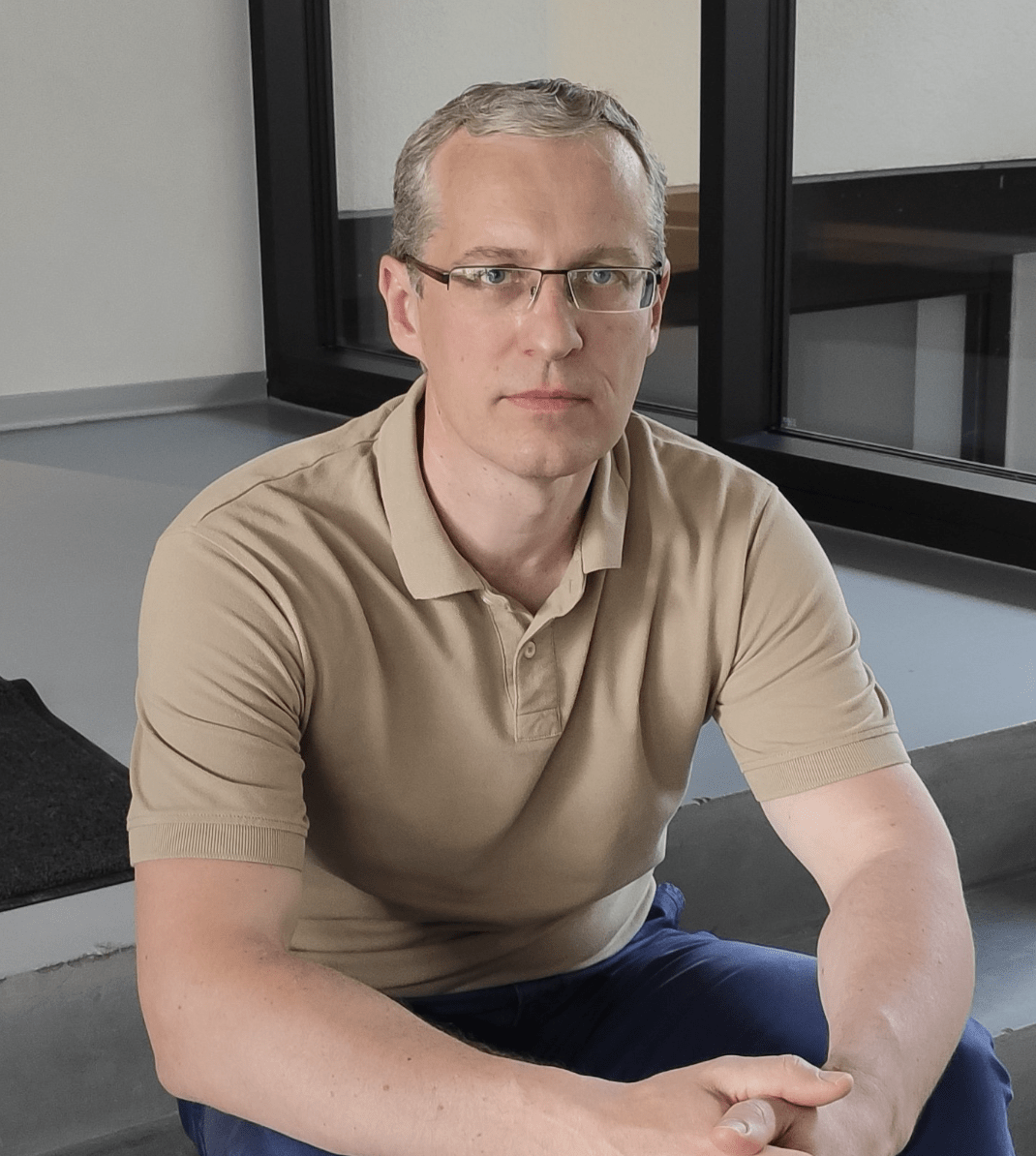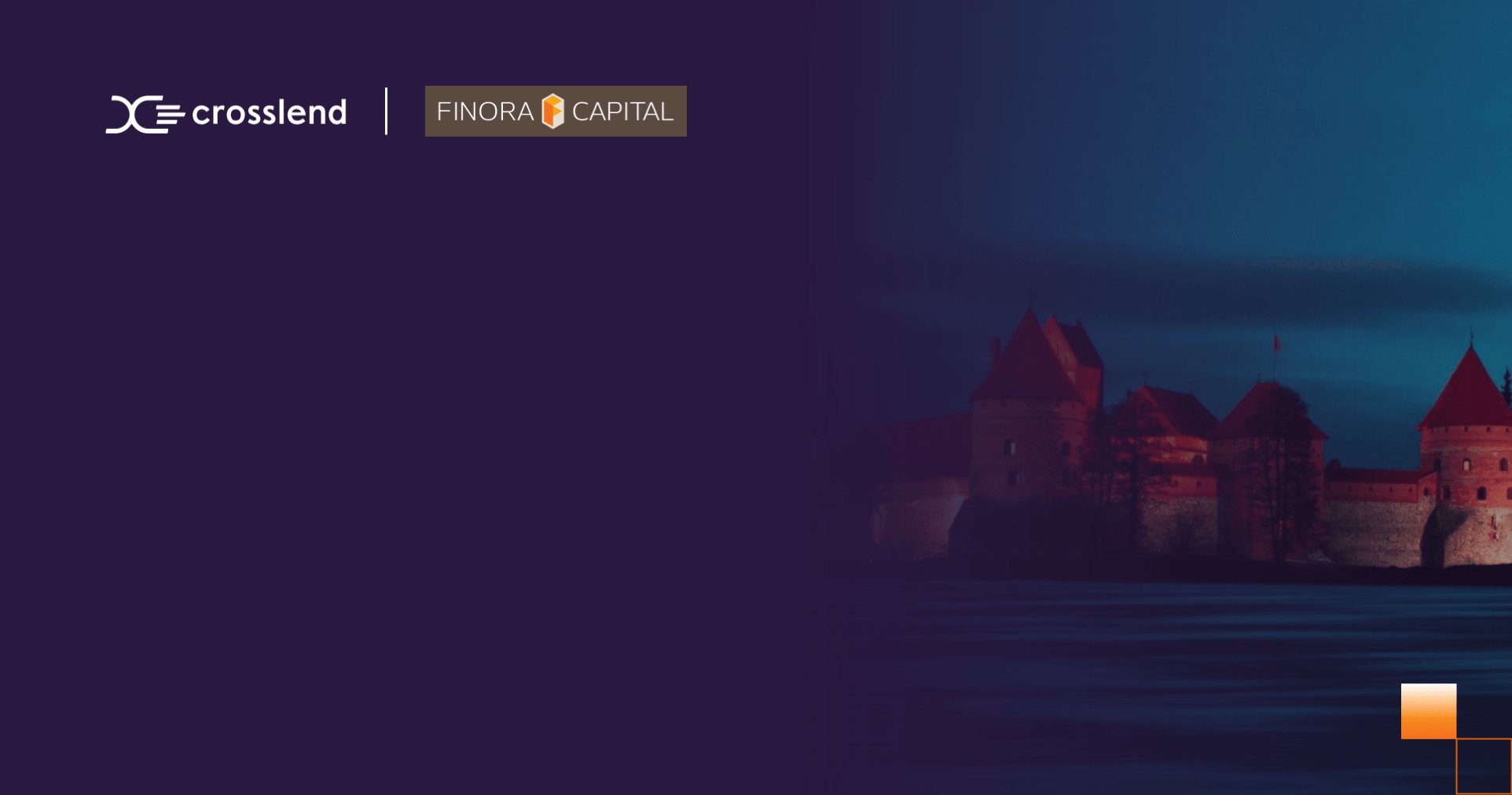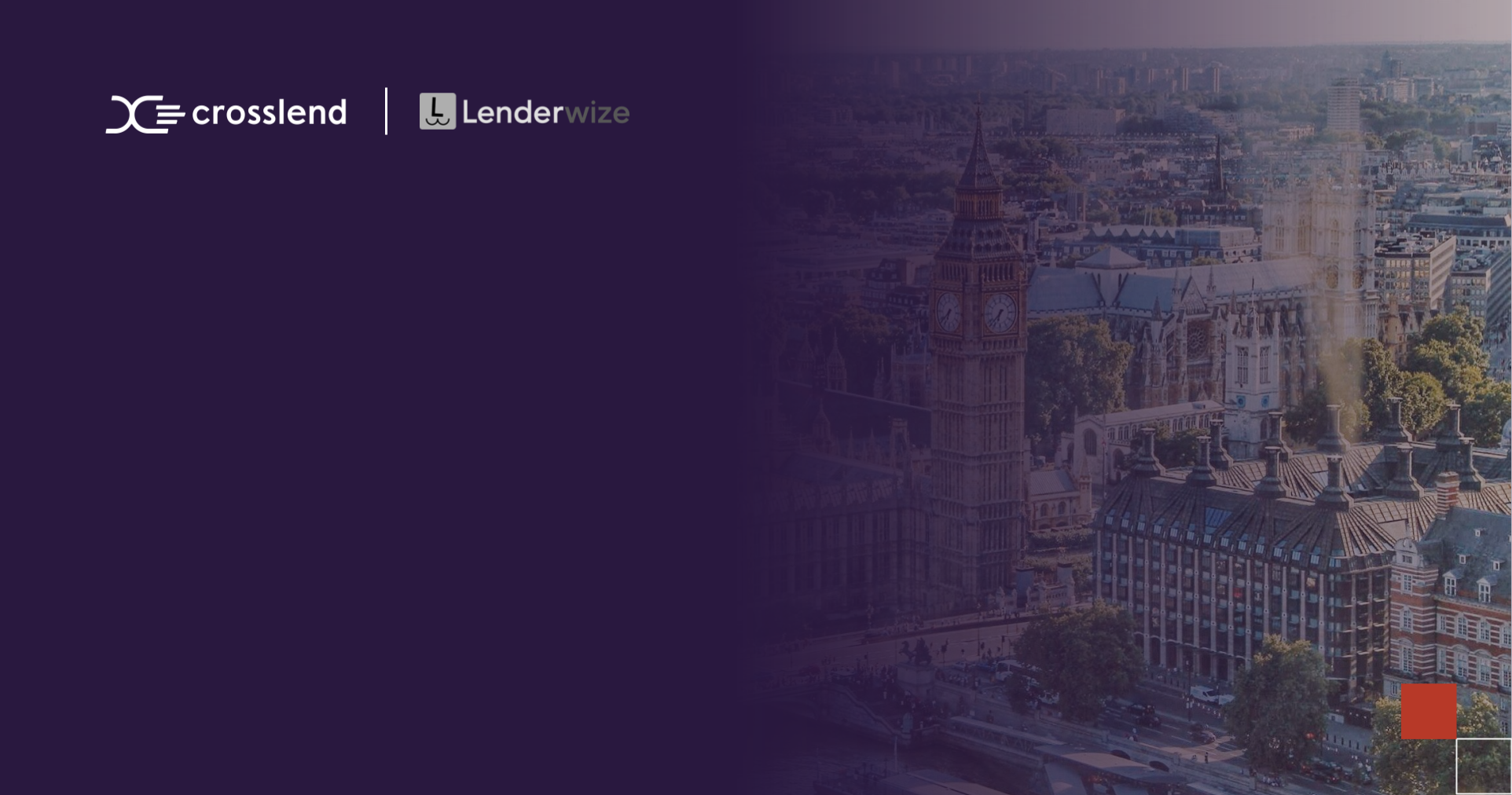Originator Spotlight/ Finora Capital (Lithuania)
Based in Vilnius, Lithuania, Finora Capital is a fast growing digital lender focused on providing working capital loans to small and micro enterprises. With origination volumes of 9.5 million euros in 2021, the company recently signed a guarantee agreement with the European Investment Fund (EIF) that should help it extend credit to a broader range of companies and grow its origination volume.
Aurelijus Šveikauskas, CEO & Country Manager at Finora Capital (Lithuania), spoke with Andrew Tierney, Director of Capital Markets & Origination at CrossLend. They talked about how digital lenders may be called on to fill the funding gap as state aid granted during the pandemic expires, the transformation of the Lithuanian economy and Finora Capital’s approach to managing credit risk.

Andrew Tierney: Please could you give a brief introduction to Finora Capital, including your current activities and how long you have been active in the market?
Aurelijus Šveikauskas: From the very beginning we have been involved only in lending to small and micro enterprises. Our main focus has been on providing working capital loans. Currently we have three main types of loan products. First, and most important, is unsecured working capital loans. Secondly, loans with pledges – these pledges can involve various types of assets, like real estate, or current assets like receivables or stocks. We accept various types of assets as a pledge. The third product is leasing for various types of assets like machinery, transport vehicles, and other long term assets which are used for business purposes.
We started our activities a little over two years ago. Our company is owned by an Estonian entity and our parent company has the same business profile as we do. We do business under a separate entity which is registered in Lithuania, representing geographical expansion for the parent company. They remain focused on the Estonian market, and we focus solely on the Lithuanian market.
Andrew Tierney: In terms of business processes, approach to credit risk and so forth, do you work in sync with the parent company, do you match their working style, or are there some notable differences?
Mr. Šveikauskas: There are many things in common – we have adopted the processes used in Estonia in Lithuania too. But since we are still both young, small entities, we continue to improve our processes as and when it is needed, regardless of where the initiative comes from. When it comes to credit decisions to issue loans, it depends primarily on the size of the loan. To some extent, we are fully independent and make decisions internally within the Lithuanian entity, but when the amount exceeds a certain limit, the decision is made mutually – both by responsible persons in Lithuania and Estonia.
Andrew Tierney: You’re a small team, so is technology doing some of the heavy lifting?
Mr Šveikauskas: Our website and online advertisements help us drive traffic. Processes like credit decisions rely on automated scoring tools to some extent, but human participation is always involved in lending decisions. Lending decisions are based on a wide range of information, hence full automation is hardly possible.
Andrew Tierney: How was 2021? Can you tell me about the market conditions, the demand for credit, and from a credit risk management perspective what you are looking at with borrowers?
Mr Šveikauskas: 2021 was better than 2020. The overall environment and the economy were more stable. Demand for loans increased compared with 2020. The total lending market, including banks, grew and reached the same origination volume as in pre-pandemic times. The recovery is being felt. The drop in borrowing in 2020 was mainly due to the state aid that was offered that year, which now mostly has ended. So, 2021 was very successful for us – we issued a total of 9.5 million euros to 212 borrowers, which represents around 21% of the total loan application volume we received.
The conversion rate is mainly determined by the quality of customers, their credit capabilities, or risk level. Competition and financing volume capacity are nonetheless important factors, which influences conversion rate.
Andrew Tierney: Can you share with us any targets for your origination volumes in 2022 and beyond?
Mr Šveikauskas:
Going forward, we anticipate that we can increase our loan portfolio by an additional 10-20 million euros within Y2022 and Y2023, hence the reason we are seeking additional financing.
Andrew Tierney: Can you give us some more insights into your approach to managing credit risk? What are some of the things you look at when a company applies for a loan?
Mr Šveikauskas: Our focus is on small and micro enterprises. These might be trade companies, manufacturers, retailers, and those in other sectors. One exclusion is that we are not currently active in agriculture. We look for those which have an annual turnover of up to 10 million euros. These customers are not as well served by banks compared with larger businesses, so there’s more room for us to compete and grow.
Looking at the average ticket size, the range is quite narrow. In 2021, our largest individual loan size was 200,000 euros. Thus we aim to diversify our portfolio mainly by providing financing to a broad range industries and issuing loans to customers in smaller tickets.
Andrew Tierney: What is your outlook on the economic conditions looking forward? Are there any specific risks in the market that might lead you to decline an application in a sector?
Mr Šveikauskas: Most sectors are doing fine, except perhaps restaurants or other businesses in the hospitality sector, but even there we have noticed that this sector has transformed and is now focusing on food and delivery, instead of servicing customers in house. So actually, thanks to state support, most industries passed through the pandemic quite smoothly, so we actually don’t discern any specific risks.
Looking to overall metrics of credit risk, according to data from the European Banking Authority (EBA), during the past two years, the delinquency level has slightly increased. The probability of default increased during this period, i.e. weighted average PD increased from 1.5% before the pandemic to 2.5% as of Q2 2021. So PD remains at a satisfactory level, and I hope it will even improve. But it’s hard to predict the impact on businesses when all these state aid measures end. One of the outcomes may be that the demand for loans will simply increase.
Once businesses have to return various state aids, they will need additional financing, so this might even be useful for us. GDP hasn’t dropped during the pandemic, and it’s anticipated that it will even grow this year. [Eds: recently the OECD projected GDP growth above 5% in 2021 and close to 3.7% on average in 2022 and 2023]. In terms of risk, we have quite a positive outlook for the environment this year and perhaps also next year.
Andrew Tierney: In terms of clients, what are some of the typical reasons they come to you for a loan?
Mr Šveikauskas: Our customers’ main need is working capital financing. If a customer is borrowing to finance a purchase of long-term assets, or to make other investments, then the duration of such financing is much longer than working capital loans. For longer duration the price of financing becomes more important compared to when one borrows for the short term. That’s the main thing that determines our type of customer and their needs. As an alternative lender, we are more expensive than traditional banks. Sometimes, our working capital loans help businesses to make small investments in equipment for their company. And in such situations, the price we charge for our loans is quite acceptable to them because it still remains a short term loan. Currently the average maturity is around 15-16 months.
Andrew Tierney: You recently announced a new funding deal with the European Investment Fund. What are the main details of this deal?
Mr Šveikauskas: The initiative has been around for a while, but recently the EIF expanded the application of its programme, allowing a much broader type of financial intermediary or financial institution to apply. On November 29, 2021 we signed a portfolio guarantee (EGF). According to this agreement, we can now issue loans for up to 30m in total volume, and they will be protected by this portfolio guarantee.
There is a loss rate cap, but the guarantee is quite high – high enough to cover all our potential losses, even above the level of losses that we anticipate happening.
The guarantee rate is 70% at a single loan level. If a customer goes into default, then this is a trigger to claim the guarantee payment from the fund. This applies only to newly issued loans going forward.
Andrew Tierney: Will this allow you to relax your criteria? Do you envisage writing more loans, or larger ticket sizes?
Mr Šveikauskas: We will slightly increase our risk appetite, because it is actually required and requested by the European Investment Fund to behave in such a manner. So we could ease our requirements for pledges in case of more sizable loans, and perhaps decrease our price, because the risk portion in the price has decreased. Overall, it will be possible to slightly improve our lending conditions and reduce risk requirements.
Andrew Tierney: Looking broadly at the Lithuanian economy and the outlook for borrowers, what’s important for potential investors to consider?
Mr Šveikauskas: In my view, Lithuania’s economy is doing really very well. Each year it is improving and increasing, especially with the expansion of modern industries such as FinTech, IT, laser manufacturing, and other innovative industries – these are increasing in Lithuania and becoming more and more important in the overall economy. Older, traditional types of industries, which have been quite dominant in our economy, are becoming less and less dominant. Our economy is becoming more and more advanced, and we are catching up quite rapidly with economies in Western Europe. From the view of a lender, the customer risk is declining.
Andrew Tierney: Going into more detail about your approach to credit risk mitigation, can you talk about your expertise there and some of the analyses you carry out?
Mr Šveikauskas: We receive applications online and customers provide additional information – financial statements as well as more explicit data which cannot be extracted from the financial statements like explanations, detailing what figures are behind these numbers. And then we collect data from credit bureaus – there are quite good credit bureaus with extensive information about various historical events – default events, delinquencies, any court proceedings, any change of shareholders, owners, CEOs, managers. Credit bureaus can also tell us the number of assets like transport vehicles that a business has. The information is quite extensive, and it is really very useful in our lending decisions. After we collect all this information, we carry out credit scoring, and the risk class that comes out of that influences the final decision.
For smaller companies, we typically request additional data such as bank statements. Sometimes the financial statements prepared by customers may not be very accurate. So, we always check the bank statement in order to see the real cash flows in and out. We compare the bank records to the financial statements to see if they correspond. Other credit risk assessment criteria are likewise of high importance in loan issuing, such as level of indebtedness, overall financial health, and other metrics.The lending decision is made by at least two people, and if the loan decision is positive, the loan agreement is shared with the customer to accept. All documentation is handled digitally.
Andrew Tierney: What is the situation with credit bureaus in Lithuania?
Mr Šveikauskas: At least one of the credit bureaus has been active for more than 20 years and has collected a huge amount of historical data, so it is really helpful. There are some new credit bureaus who are also doing very well – they offer their own scoring tools, and we compare the outputs of our models to the scorings produced by their algorithms.
Andrew Tierney: Outside of the standard approach and scoring models, are there any red flags you look for?
Mr Šveikauskas: Red flags can include when the owner has changed recently, or when the CEO of the company has changed. That implies that something may change with the business of the company after the new owner or new CEO begins operations, meaning that the analysis performed on the historical data becomes not so relevant. But another risk factor is that this can be a method to execute a fraud. We have had some instances in the country that have become quite well known as a method of fraud – a person buys a company with a good history, and borrows money, having no intention of repaying the loan. Delinquencies are another red flag – if a customer has open delinquencies to a utility company, financial institution or whatever, it’s something which we pay very careful attention to.
Andrew Tierney: Thanks for your time today. Is there anything else you would like to add?
Mr Šveikauskas: I believe that from the point of view of investors, our lending business model offers an exceptional risk return balance. If any investor would compare the risk level of our lending market compared to for instance, France, Germany, or any other well-developed country, Lithuania’s risk level is only slightly higher, but when you look at returns, compared to for instance Germany, the investment offers much higher rates. I would say the risk reward balance is very appealing. And of course, for Euro-zone investors, there is no currency risk.
Follow CrossLend on LinkedIn for more Originator Spotlights, and our latest insights on private debt, finance and innovation.
Any views expressed in this interview are the personal views of the interviewee, and do not necessarily reflect the position of CrossLend or its employees. This article should not be construed as investment advice, or relied upon by anyone as legal, accounting, compliance or tax advice, or for any other purposes. This article is not to be construed, under any circumstances, by implication or otherwise, as an offer to sell, or a solicitation to buy securities.
Related articles
Securitisation: active management option to boost Luxembourg hub
The overhaul of Luxembourg’s securitisation laws introduced a number of changes, notably allowing for active management and a broader [...]
Originator Spotlight/Lenderwize
A fast-growing trade finance platform, Lenderwize specialises in invoice financing in the digital economy. Currently its platform provides its [...]
Digital lending emerges as an important sub-segment of private debt
Amid increasing breadth within the private debt asset class, specialised investors can allocate capital to sub segments in a bid [...]








